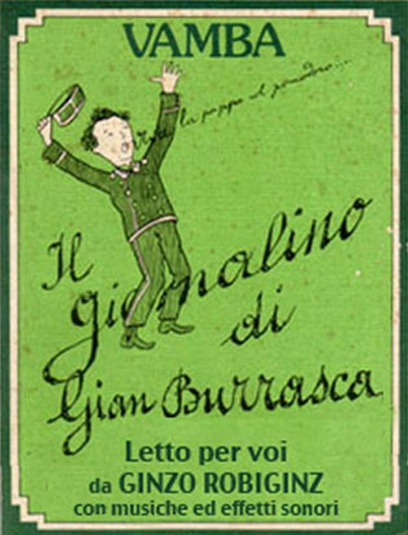In today’s blog, our guest blogger Ambra Sancin shares her memories of a famous song.
It was while writing atribute post to the late US-based cookbook author Marcella Hazan that I had an extended tomato moment. Flicking through her many tomato sauce recipes, I remembered how a dish called ‘Pappa al Pomodoro’ came into my life in the mid 1960s while on a family trip back to Italy from Australia.
The soupy tomato dish came via Italian actress/singer Rita Pavone, who didn’t cook it: she sang about it on television! Rita had already taken Italy by storm aged 17 in 1963 and international success followed with hit singles, performances alongside Diana Ross and the Supremes and regular guest spots on the popular Ed Sullivan Show from 1965 to 1970.

But it was Rita Pavone’s lead role in the children’s TV series Il Giornalino di Gian Burrasca (Gian Burrasca’s Diary, see image above) from 1964-65 that made her Italy’s darling. Directed by Lina Wertmuller, it’s based on the 1907 book published as a newspaper diary about a mischievous pre-teen in Tuscany. He’s an unruly kid and therefore nicknamed ‘Burrasca’ (big storm or gale in Italian) by his parents.
Deemed uncontrollable by his family, Gian Burrasca is sent to boarding school where he rebels against the despotic headmaster and all manner of chaos follows. What has stayed with me – and probably millions of Italians – is the song ‘Pappa col Pomodoro’ which Rita Pavone sings so endearingly.
This clever song was released as a single in 1965, becoming one of Italy’s most popular songs and helping to revive the dish again.
The song is very relevant to the storyline because the lyrics have a social nuance: the Tuscan dish ‘Pappa al Pomodoro’ being food of the poor, made with stale bread and tomato sauce to produce a palatable soup. It was probably first cooked near Siena or Florence when tomatoes were introduced to Italy in the 16th century.
 |
| Rita Pavone in her Gian Burrasca costume |
I’m not sure why many recipes for this dish are called ‘Pappa al Pomodoro’ while the song is ‘Pappa col Pomodoro’. Perhaps some food historian or linguist could explain?
Viva la pa-pa-pappa
Col po-po-po-po-po-po-pomodoro
Ah viva la pa-pa-pappa
Che è un capo-po-po-po-polavoro
Viva la pa-pappa pa-ppa
Col po-po-pomodor
La storia del passato
ormai ce l´ha insegnato
Che un popolo affamato fa la rivoluzion
Ragion per cui affamati
abbiamo combatutto
Perciò “buon appetito”
facciamo colazion
Roughly translated, it reads:
“History teaches us
That a hungry people
will start a revolution
That’s why hunger needs to be fought against
So ‘good appetite’
Let’s have breakfast
Long live pappa col pomodoro
Long live pappa col pomodoro etc.”
Here is la Pappa col Pomodoro recipe, with a bonus clip of Rita Pavone singing the famous song.
(Rita Pavone currently lives in Ticino, Switzerland and her last appearance was at a concert in Miami in 2002.)







Comments:
Loredana:
In the first Renaissance treaty “Banchetti, compositione di vivande et apparecchio generale” by Cristoforo Messi Sbugo (1549), it is already possible to see how some typical structures are permanently encoded in the Language of gastronomy and, among them, we can find the prepositional phrase of specification “noun + al/alla” (salsa alla genovese, pasta al sugo). However, it is correct (and it is frequently used) the construction noun + col (con + il) or noun + con la (if feminine) where the preposition indicates the peculiar ingredient of a certain kind of dish (pasta col pomodoro, pasta col ragù, pasta con la ricotta etc.). Talking about the song, it is possible that the choice for “pappa col” instead of “pappa al” has had “melodic” reasons: in fact in “pappA Al” we have the meeting of 2 vowels that come together in a unique sound (pappalpomodoro), instead the singer likes to insist on the pronunciation of the beginning of each word. I was not born yet when the song was released, but I could still enjoy both the song and the TV serial during my childhood; and the book was so amazing and impressive that when my daughter turned 8 I bought for her a copy of Il Giornalino di Giamburrasca”, and she read it in one night!
Geoff:
@Loredana Grazie Loredana, molto interessante. Saluti da Geoff 🙂
Loredana:
errata corrige “Il Giornalino di Gian Burrasca”. I typed it wrong